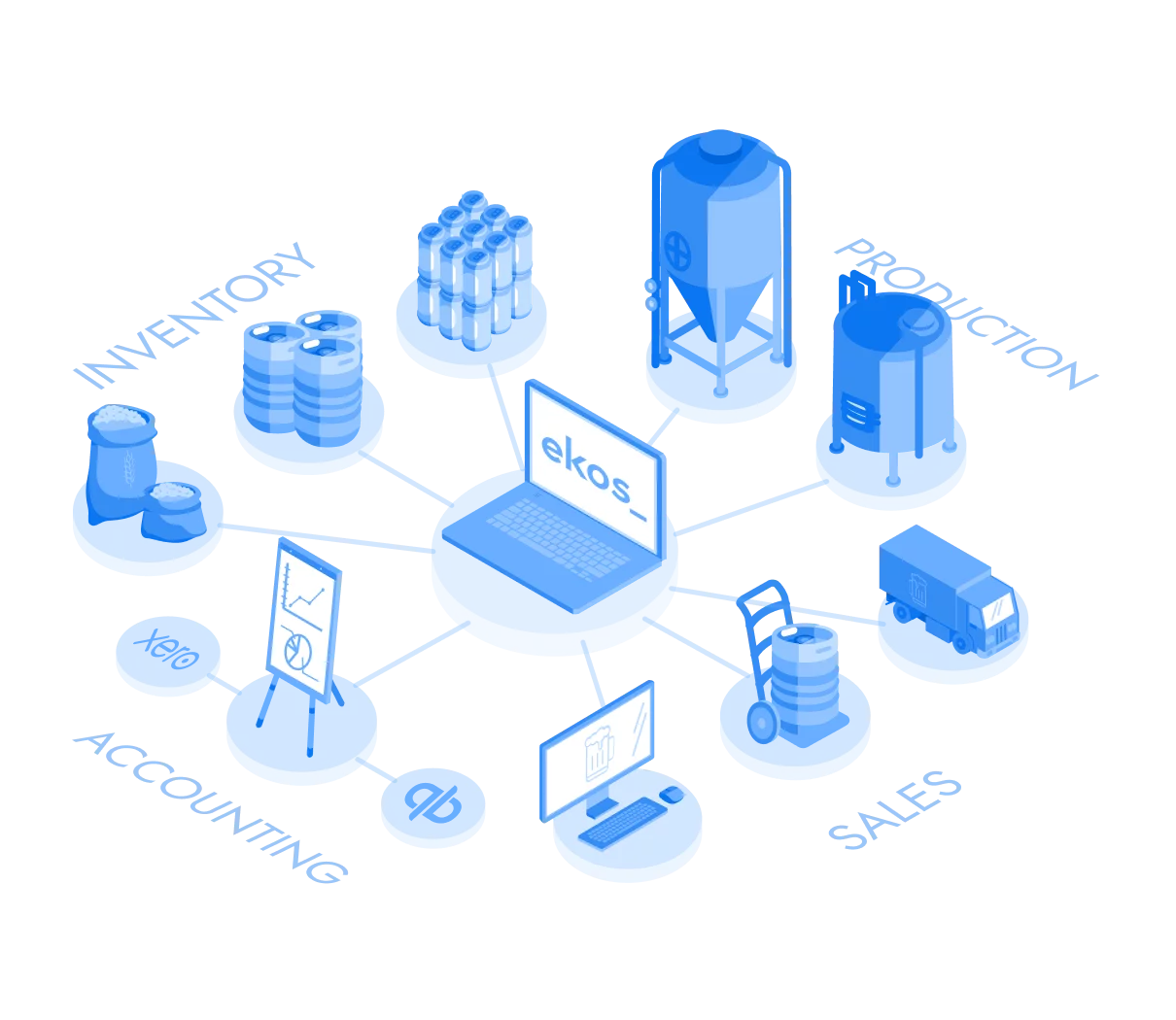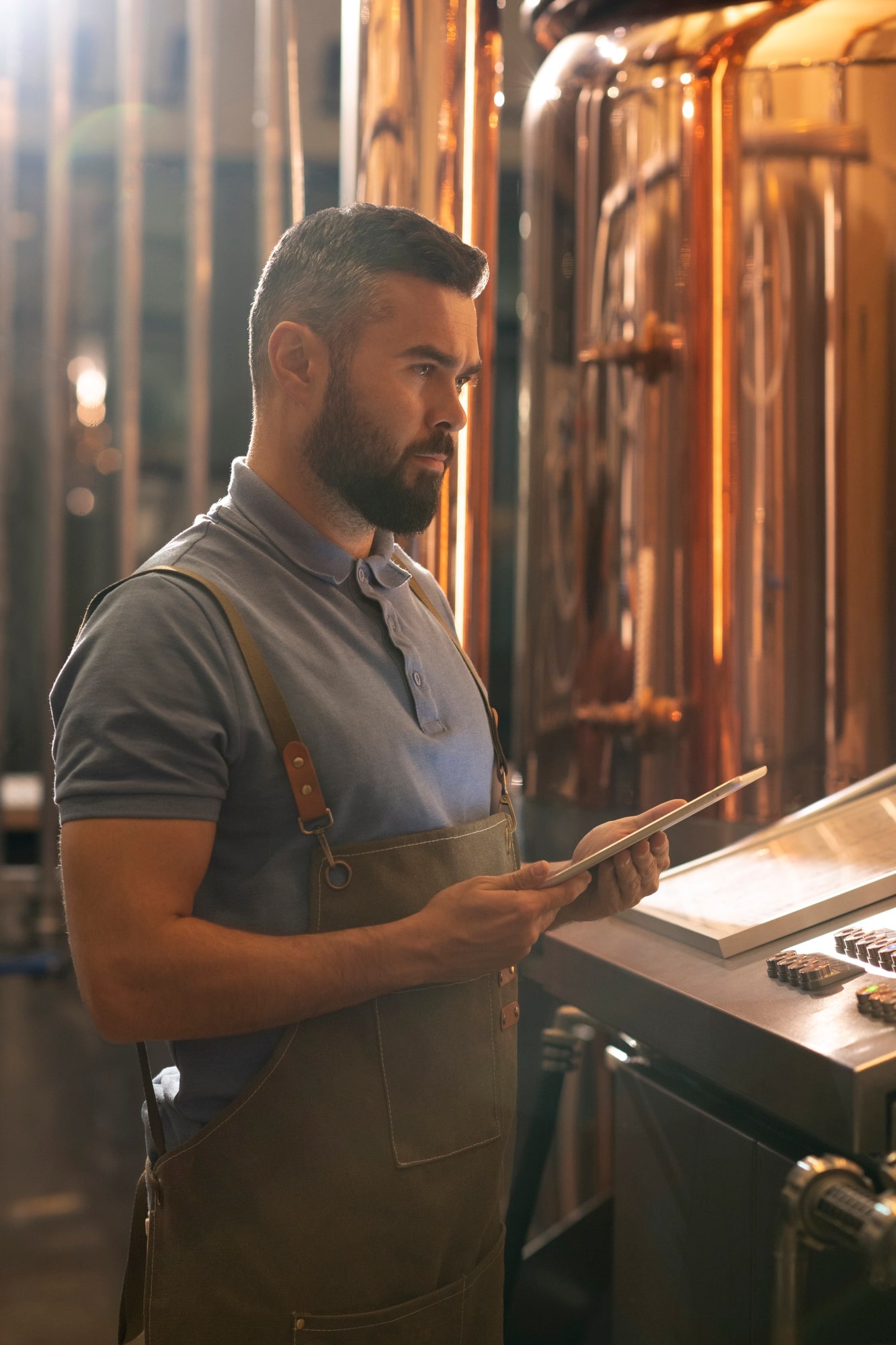For most winemakers who like to focus on their craft, taking notes can be a rushed or even haphazard process. Between harvest and bottling and endlessly tweaking this year’s red blend that just isn’t coming out right, record-keeping and more comprehensive winery data management can quickly fall by the wayside.
It’s a pervasive trend throughout the industry. According to one report, almost half of all wineries don’t have anyone on staff dedicated to or even tasked with keeping and analyzing data.
But as you age each wine to perfection, it’s important to consider the business side of the winery. Winemaking is an art, but the winery is a business like any other. The numbers have to add up, and it’s hard to know whether they do without accurate records.
As the winemaker, you have a key role in this process, whether you’re the sole production employee or you manage a large cellar team. You set the tone for how things are done, and improving your documentation processes can have a major impact on the entire business. It can also free up your time to focus on the wine. (If this sounds counterintuitive, we promise it’s not—read on.)
In this post, we’ll explore ways you can improve your data management processes, get better information, go paperless, and become more strategic in approaching the business side of winemaking.
3 Benefits of Improved Winery Data Management
Above all, data management processes should be designed to build efficiencies and solve problems. As you look to improve the business side of your operation, consider these 3 benefits of becoming more strategic in collecting, managing, and leveraging data for your winery.
1. Smarter Wine Making Decisions
Likely of the highest importance to you, the wine itself can benefit from better data management. That begins with basic note-taking. With clear and accessible notes, you can more easily recreate the success of previous wines if you’re so inclined. You won’t have to guess about things like fermentation time, top-off volumes and sources, specific types and brands of additives, and aging time and type.
As a result, you can build consistency that ultimately benefits your business. But it doesn’t end there. Winery data management can also help you in a few other, crucial ways:
- Keep all information in a central space, making it easier to reference for your staff and any other external parties.
- Keep track of important customer and sales information that allows you to make more intentional decisions on anything from production to marketing.
- Keep better track of your inventory to improve the inventory management and reordering process.
That comprehensive note-taking is the key. From there, every step you take to more effectively manage your winery data ultimately leads to smarter, more business-focused decision-making.
2. Easier Problem-Solving
Sometimes, the wine just doesn’t turn out the way you envisioned it. It happens to every winemaker. When you’ve documented the entire process from start to finish, you can more easily identify what went wrong. It may be an obvious mistake or something that takes more analysis. But with detailed notes, you’ll have the right information to figure it out.
Your problem-solving abilities also extend to more strategic business decisions. When you’re short on ingredients, for example, you can reconcile just why that might be the case and how you can improve it in the future. Easy access to data at any given time can help you quickly identify issues and solve them with an eye on the future.
3. Massive Time-Savings
While getting in the habit of comprehensive winery data management can be time-consuming at first, you’ll thank yourself in the long run. Recalling past wines and identifying issues are both much quicker processes, as we mentioned above. Additionally, you can whip up insightful reports—whether they’re for you, your boss, or the government—without the hassle of digging through a notebook.
You might not believe us, but even the TTB’s Report of Wine Premises Operations (Form 5120.17) doesn’t have to be a headache. With the right record-keeping process, you can fill out most of the sections of your TTB reports in minutes instead of hours or days.
What Information Should Winemakers Record?
Winery data management is by definition complex, so it can be difficult to know where to start. While some of these data points may not apply to your business or winemaking process, here’s a list broken down by category to get you started:
Related: How to Use Technology During Wine Harvest Season
- Harvest: All intake information, including block name, intake date, total volume of intake, weigh-ins, crushing, destemming, pressing, additives, lots, and equipment destinations
- Fermentation and conditioning metrics: ABV (estimated and actual), attenuation, temperature (°F), Brix readings from refractometer and/or hydrometer, pH, residual sugar, malic acid (if applicable), titratable acidity, volatile acidity, free SO2, total SO2, dissolved oxygen, and cell count
- Production tasks: Equipment splits and transfers, blending, sensory tests, additives, top offs, and aging
- Bottling: Packaging types and quantities and related inventory used (corks, foil, bottles, etc.)
Beyond Production: The Importance of Tracking Winemaking Costs and Inventory
Any item used in the production and bottling process should have its cost clearly recorded. This includes everything from grapes or bulk juice/wine purchased from other vineyards to yeast, additives, and bottling materials. Documenting the cost of each winery inventory item will help you and your team:
- Track ingredient costs over time
- Fully understand the costs that go into each wine lot
- Accurately calculate cost of goods sold (COGS)
- Price your wine to make your desired profit
The Increasing Importance of Sales and Marketing Information as Part of Your Winery Data Management
Make no mistake: The winery industry is getting increasingly competitive, with the number of new suppliers beginning to outpace demand. In that environment, adding sales and marketing information into your data management strategy is becoming increasingly important.
In fact, experts are increasingly calling for data-driven decision-making to drive this part of the business. Decision points might include:
- Understanding the percentage of retail vs. wholesale revenue, as well as on-premise vs. off-premise revenue
- Shaping your strategy depending on the percentage of sales you might have direct-to-consumer
- Differences in sales and revenue figures by wine type, region, and audience demographics
- A/B tests of the effectiveness of different marketing and sales messaging to these demographics
- And more
Put differently, every part of your business may be improved by more strategic and comprehensive winery data management. The key, then, is finding the right solution for your specific needs.
3 Types of Data Management for Winemakers
From production to inventory and sales, you’ll have a lot of information to keep track of. So how do business-savvy winemakers save time on arduous documentation?
The key is to digitize and automate as much as possible. In reality, most winemakers rely on a combination of manual and digital methods. But the more you can move your record-keeping and data management processes away from handwritten notes, the better off you’ll be. Here are some pros and cons of different methods.
1. Notebooks & Paper Logs
We know many winemakers who carry their trusty notebooks in their pockets at all times. Many wine production teams use paper winemaking logs to track fermentation metrics and write down sensory notes. These are obviously the cheapest, easiest methods of record-keeping.
Paper records are the easiest to use, but they’re also the easiest to misplace and damage. If you spill something while testing or have a more serious situation like a fire or flood, those notes could be lost forever.
Not to mention, we’ve seen inside those notebooks, and it usually isn’t pretty. It can be difficult or even impossible to aggregate data into usable reports when you’re dealing with handwritten information. Doing this manually takes more time than a busy winemaker ever has. And, if you want to share the information with your cellar workers, you’ll need to make physical copies or take photos, which other team members can’t add to or edit with the most up-to-date metrics or test data.
Plus, let’s be honest, it can be hard to read the handwriting of someone who was hurriedly jotting something down. In summary, paper records can work in a pinch, but they should never be the cornerstone of your data management process.
2. Spreadsheets
The vast majority of winemakers looking to move away from paper logs will upgrade to digital spreadsheets. Common uses include wine inventory spreadsheets, winemaking logs, and wine costing spreadsheets. Spreadsheets are still cheap (free, if you’re using a program like Google Sheets), but they have the added benefits of editing and sharing. You can also more easily search for and manipulate specific data in spreadsheets to help you find what you need.
Related: Winery Inventory Management: How to Get Started
Despite their advantages over paper records, spreadsheets still have limitations. They must be manually built and maintained, which can lead to corrupted files and misplaced formulas without meticulous attention to detail. As you add more information over time, spreadsheets can become unwieldy—or you have to create dozens of them just to keep up with all of your in-progress wine lots, case goods inventory, sales data, and more.
Spreadsheets also tie you to your computer. Because of their format, it’s difficult to edit or even view a spreadsheet on a tablet or mobile device. That leaves you with the option of either lugging a laptop around the winery with you or handwriting your notes and entering them into the computer later. While we always recommend having digital versions of your records, you probably don’t have time to document them twice.
3. Data Management Software
If you want to go paperless in the winery without relying solely on manually built spreadsheets, winemaking software could be the answer. When you use a winery management software program, the data you record is tied directly to a specific wine lot and its equipment.
You can quickly view completed and in-progress harvest, production, and bottling activities. Any software made specifically for winemakers will be built with your workflow in mind, so you won’t have to spend time trying to make a spreadsheet or paper log reflect your day-to-day process.
In addition, other relevant team members can view that information and be assigned tasks or work orders as needed. If the software is optimized for mobile use (which it should be), you can access and add information right on your phone or tablet as you walk through the winery each day. With one central place to track cellar information, the whole team will be on the same page.
Remember what we said at the beginning of this post about making smarter winemaking decisions? Winery software makes it easier to view notes and metrics about past years’ vintages and wine blends so you can make tweaks with the full knowledge of what you’ve done before (whether it worked or not). It can even hook into your sales data to add that piece of the winery data management process.
Of course, adopting software will require a bigger investment of time (initially, to get set up) and money than other methods of record-keeping and data management. But if building a brand that lasts is one of your goals, establishing proper business processes is a necessary step in the journey. Once you’ve made the switch, you’ll wonder how you ever survived on paper and pen.
Dive Deeper Into Winery Software
You already make great wine—now, it’s time to keep track of it more efficiently and optimize the business side of managing a winery, with a more strategic data management effort. Download our free buyer’s guide to winery software to compare the different types of software programs out there, get lists of questions to ask your team and potential vendors, and learn how to get your team using the software once you’ve bought it.P.S. Ekos is the modern software for winemakers—get the details about our platform and take a self-guided tour today.



